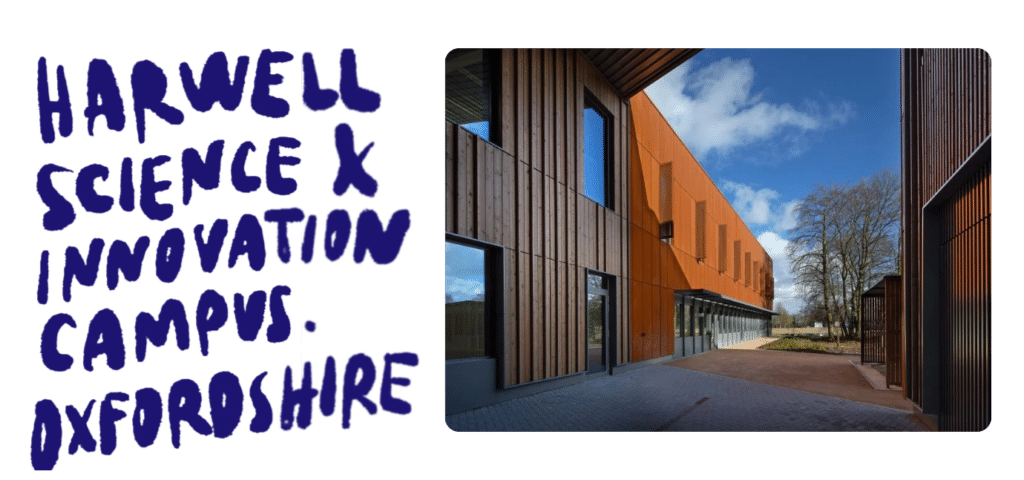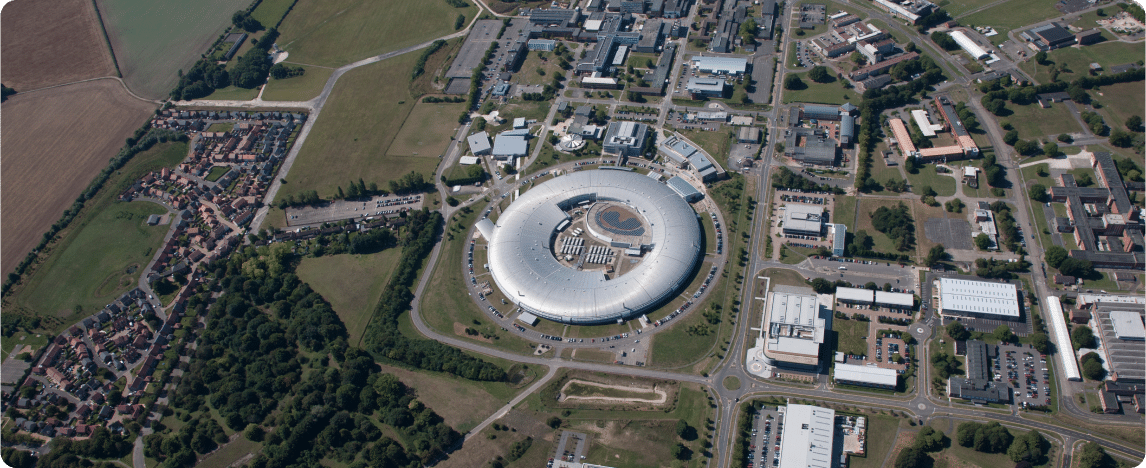


THE FIX‘s first edition took place at Harwell Science & Innovation Campus in Oxfordshire, England on September 18 2025.
Harwell is home to 6,000+ scientists, engineers and innovators, £3bn of scientific infrastructure, and 200+ organisations across 700 acres.
Technology and research are at the heart of everything Harwell does. A unique combination of world-leading research and technology facilities support teams and businesses to reach their full potential. Pioneers and experts work side by side at Harwell to deliver innovation: startups, scale-ups and leading companies are part of a vibrant community of some of the planet’s most enlightened businesses and brightest minds.

Originally founded in 1946 to tackle the energy crisis and advance nuclear technology, today Harwell is home to a federation of leading science and technology organisations and facilities. The campus is a unique collaboration between the UK government, academia and industry working to accelerate progress on the key issues of our time — from clean energy to pandemic preparedness. The community includes publicly funded scientific infrastructure like the National Quantum Computing Centre and the Central Laser Facility, anchor organisations like the European Space Agency, and innovative private-sector organisations like Oxford Nanopore and Astroscale, alongside teams from 30 UK universities.
Harwell Science & Innovation Campus’s purpose has always been to enable breakthroughs — at scale — via science, innovation and collaboration. By creating a critical mass of scientists, shared knowledge and incredible machines, Harwell enables breakthroughs that change the course of history.
The campus is managed and developed by a group of organisations — the Science and Technology Facilities Council and the UK Atomic Energy Authority and a private-sector investor, Brookfield. It is investing significantly in the campus to add homes, facilities and more R&D space to enable sustainable growth and an even faster rate of innovation.
From the opening of the first Medical Research Council laboratory in 1945 to the launch of the Diamond Light Source Synchrotron in 2007 and the Health Tech Cluster in 2016, Harwell Science & Innovation Campus is rich in world-firsts and proud of its direct role in scientific leaps forward.

About the Harwell Health Tech Cluster
The Harwell Health Tech Cluster was launched in 2016 and has had several very successful years of development, with significant Government and private investment into new facilities, prominent stakeholders joining the cluster, and culminating with Harwell being designated as one of the Life Science Opportunity Zones by the Office for Life Sciences. The campus is now home to 60 organisations with over 1,400 staff working in life sciences, several of which develop and commercialise innovations that span more than one industry sector.
Harwell provides access to ~£3B of Government-funded infrastructure, hosting advanced imaging and analytical technologies, including X-rays, muons, neutrons, IR, UV, lasers and other imaging modalities, and an array of research facilities offering next generation chemistry, biology, genetics and drug discovery, all within walking distance. Underpinned by significant computational power and expertise, large complex data sets can be interrogated, enabling the imaging, structural characterisation and analysis of virtually all substances, materials and living things.
To date the cluster has been built on the foundations of three core strategic themes aligned with the UK Industrial Strategy, namely Environmental Impact to Human Health, Drug Discovery and Ageing. These continue to lie at the heart of the cluster, but have evolved considerably into several specialty fields, attributable primarily to the addition of the Rosalind Franklin Institute, Vaccines Manufacturing and Innovation Centre (VMIC) and the Nucleic Acid Therapy Accelerator (NATA) initiative based at the Research Complex at Harwell. We continue to grow the capabilities and facilities on site and will soon welcome the Extreme Photonics Application Centre and Natural History Museum Research Centre. Collectively these new additions represent the majority of the £800m recently invested in the campus, and will enable new insights into the complexities of disease at the cellular, molecular and atomic level.
This knowledge and enhanced understanding will create new tools for diagnosing illnesses earlier and more accurately, and new treatments for disease with improved efficacy in targeted patient populations. Industry partners will benefit from decreased drug candidate attrition and market-leading products, and ultimately people will live longer, healthier and happier lives.

Under-23 (Proof of Age Required)
Team Festival Pass (5 tickets)
VIP Festival Pass
All Access Festival Pass